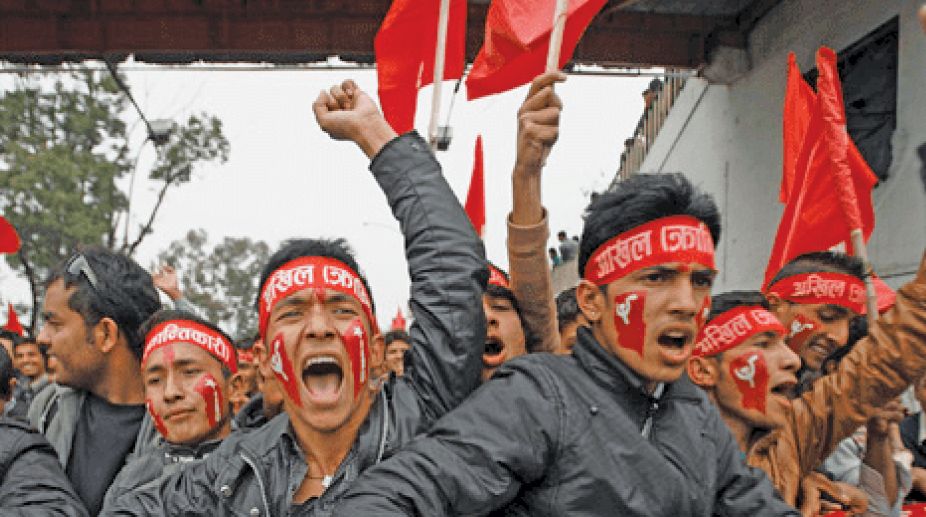Jharkhand unveils ambitious plans for education, science and innovation
The Jharkhand government has unveiled ambitious projects aimed at propelling the state into a new era of education, science, and innovation.

Communism
Modern Nepal has been paradoxical in its approach to learning and education. This paradox became evident when the revolutionary of yesteryears, Pushpa Kamal Dahal, warned his cadres against Aahuti and Baburam Bhattarai’s learning. And that, too, on Vasant Panchami, the day of worship of the goddess of learning, Saraswati. But that was nothing new in Nepal.
The Shah kings were barely literate. The great Jung Bahadur is said to be illiterate and the greater King Mahendra was not even a matric pass by many accounts. When Chandra Shamsher laid the foundation stone of Tri-Chandra College in 1918, he is said to have wept because he realised that with the establishment of the college, his family’s tyranny and ignorance-spreading oligarchy would come to an end.
Advertisement
And it did come to an end when the Nepali Congress party and its leaders who were educated in India’s schools and universities – BP Koirala foremost among them – embarked on a struggle for freedom and successfully waged a campaign against the oligarchy. The four martyrs Dharma Bhakta Mathema, Sukraraj Shastri, Ganga Lal Shrestha, and Dasharath Chand also educated themselves and found that books and learning led them from the darkness of tyranny to the light of freedom.
Advertisement
Yet, education under the Shah kings was different from education in the culturally rich Malla period. Under the Shah rulers, education remained limited to performing brahmin rituals and reading the alignments of stars and planets. Education seldom strayed into the exploration of the unknown and the adventurous. So in Nepal, the brahmins remained ritualistic but were rarely learned, unlike their Indian counterparts who had to confront Christian missionaries, British officials, and Muslim Mullahs without state patronage and monopoly.
They had to take part in shashtrartha (theological debates). That’s why perhaps, in line with its recent past, Nepal’s first university still does not have a central department of philosophy. Yet, Nepalis have been fearless and adventurous and have now set out to explore all branches of knowledge.
So, when comrade Pushpa Kamal Dahal, once known as Prachanda, warned his party’s relatively educated cadres against intellectuals like Baburam Bhattarai, who was once the public pillar of the Maoist party and whose intellectual girth won the people’s sympathy for the party, and Aahuti, who is probably the most insightful and articulate scholar of caste and the marginalisation caused by caste in Nepal, he not only exposed his intellectual shortcomings, but represented an entire strain in the Nepali dominant imagination, from Jung Bahadur’s illiteracy to KP Oli and his anti-intellectualism.
That is why, in a polity where the English phrase “source and force” had become vernacularised and used by all and sundry because pulling strings and sheer raw feudal power of the state by virtue of clan and lineage had become the ladder to wealth and power, higher education was nothing more than an instrument to posts bestowed by the state.
No wonder, then, that Nepali officialdom had become a market for the buying of fake Indian college and university certificates in the past decades. Oli, with similar pronouncements in the past against education, and now Dahal, are the inheritors of that long-established anti-intellectual legacy, with a twist.
If in the past, prohibition against education for the general public was rooted in feudal power and the ruling class’ fear of people’s liberation, Dahal’s fear against education has its roots in Stalinist extremism and the Maoist Cultural Revolution, the latter turned professors into goat herders. In this sense, whatever their sources, particular strands of communism have come to identify themselves with feudalism.
What Dahal is asking Aahuti, the intellectual who happens to be Dalit, is to dumb down and not be more intellectual than Dahal, the Bahun communist. And if a Bahun like Dahal is not as much of an intellectual as Aahuti, so what? By virtue of his caste, Dahal ought to remain superior and everyone in the party must obey his diktat. That’s the message Dahal is perhaps trying to send—knowingly or unknowingly.
Unfortunately, what Dahal and his gang of anti-intellectuals want is not going to happen. They are the dinosaurs. In the past few decades, Nepalis of any means have seen education as the primary path to freedom and prosperity for their children. That’s why even a poor villager sends his or her children to an English-medium school and wishes them to be educated even though they themselves may not know what education means.
Nepalis of means send their children to the United States, Australia, Europe to be educated. Those who can’t send them to India. The rest attend the many schools and colleges within their own country. Such large numbers of Nepalis so intensely focused on education are bound to produce dozens of Aahutis and Baburams in the coming decades. What is Dahal going to do about that?
In this sense, Dahal and his politics have become out dated for Nepal, no matter his gift of the gab. His time, as well as his politics, is over despite the fact that his alliance with the UML and Oli may keep him in the limelight for a while.
The Kathmandu Post/ANN
Advertisement